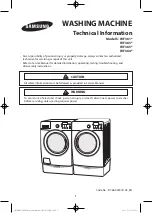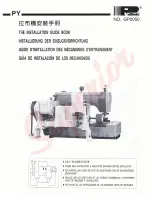
APPENDIX
203
7
Hooping techniques
“Use the right tool for the right job” is a statement
many of us have heard throughout the years. This
statement holds true even in the embroidery
industry. The wrong size or type of embroidery
frame may result in poor design alignment during
sewing or damage the product altogether. You can
take a perfectly created design and ruin the final
results by simply not using the correct frame size,
type or technique designed for its application.
■
Frame Basics
Tubular frames:
This type of frame allows tubular
fabric or pre-assembled garments to be placed
around the hook assembly. It allows embroidering of
the front of a garment without stitching through the
back of it.
Cap frame:
These are specialized embroidery frames
(hoops) designed to hold caps for embroidering.
Hooping fabric:
The framed fabric and backing
should be perfectly flat and free of wrinkles or
bubbles. If there are bubbles or wrinkles that must
be removed, be sure that you pull on the fabric and
backing together. Pull no more than is necessary to
make the fabric flat and smooth. Overstretching the
fabric during this process may cause puckers around
the finished design when the frame is removed.
Gaps may also be generated between design parts.
Inner/outer frame positioning:
There should be a
slight ridge (3 mm (1/8 inch)) of fabric and backing
below the outer frame on the back side. Tighten the
screw only if the inner frame feels loose. Avoid
overtightening the screw as this will cause puckers
in the fabric and may “strip” the screw.
■
When embroidering thick fabric
If the fabric slips within the frame or cannot be
correctly hooped, wrap masking tape or bias tape
around the outer frame. The tape will provide
resistance so that the fabric does not easily slip.
















































